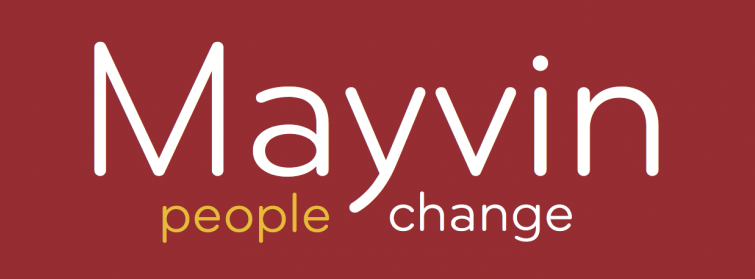The Problem OD practitioners face
Recent years have seen an increased focus in our UK client work on building OD capability in organisations. This specialised work can take a variety of forms, ranging from accredited OD capability programmes for HR Business Partners, to supervision, consultancy and advanced training and development for experienced OD teams. The more of this work we do, and no matter the sector, the more we notice similar concerns. These can be summarised by the following three questions:
- How can I talk about OD in a way that is simple, compelling and relevant to the rest of the organisation?
- What should I actually be doing on a day-to-day basis if I am to be a ‘proper’ OD practitioner?
- How can I get the necessary access, permission and authority to do the (often challenging) OD work that needs to be done?
OD theory seems to be of little use here. Standard definitions of OD are regarded as too abstract, too jargon-laden and too wordy to connect with task-focused managers with no reason to be interested. At the same time, the organisational models that we love to teach often point to things that are either too remote from practitioners’ day jobs or too hot to handle politically.
Additionally, there are often other functions working the same organisational landscape, many with a more seductively tangible offer. Thus, Service Improvement teams reengineer business processes to make them LEAN; Business Transformation teams perform organisational restructures according to a project timeline. OD work, with its emphasis on intangibles, can seem woolly by comparison.
In response to these challenges, we seek to support our clients to develop a more tangible and compelling way of thinking about and communicating their OD agenda. At the heart of our approach are two key principles that can be summarised as:
- Local, Timely and Specific OD
- Separating thinking from communication
Local, Timely and Specific OD
OD work can look very different ‘on the ground’ depending on the context. OD is probably unique as a field in that it is not defined by a set of activities. This is why the standard ‘universal’ definitions of OD, while correct, struggle to explain what OD means in practice. We have found that a more useful approach is to encourage our clients to come up with an outcome and activity-based definition of OD that is right for their context, but less universally applicable. Thus a healthcare organisation may declare that ‘OD is all about improving the patient experience through the values work we are doing’.
This kind of definition, properly crafted, is more engaging and easier for people to grasp. Of course, it is only relevant for a certain period of time and in that specific context, but our proposition is that a series of definitions such as this, paint a clearer picture than the traditional universal definitions.
Separating thinking from communication
Our other key principle is that the precise terminology and language used should make sense to the audience at whom the definition is targeted. This requires the OD practitioner or team to consider who their key stakeholders are, what they care about and how to communicate with them as effectively as possible. This becomes a communications job that is separate (though connected) to the strategic thinking job. We advise OD practitioners to make friends with their colleagues in Internal Communications.
Developing a realistic and practical OD agenda
One implication of the above is that coming up with a powerful ‘definition of OD’ that is fit for the context becomes OD work in its own right. In other words, before they can craft their definition of OD, the team needs to have developed the OD agenda, thought about its stakeholders and started to engage with them. There is a lot of good material to be found on stakeholder engagement and our approach to this is not particularly special. We have, however, worked hard to find a way to create an OD agenda that is rigorous, realistic and responsive to the practical challenges our clients face. Our approach is based on thinking through the synergies and tensions between three distinct aspects of the OD context. We present these as three interlocking circles:
- What the business needs
- The politics of the system
- The skills, capacities, values and aims of the OD team 
In our experience, an OD agenda that is going to work in practice needs to take into account all three circles.
What the business needs
This focuses on the formal aspects of the organisational diagnosis. Questions for this circle include:
- How is the business articulating its needs?
- Which organisational models does the team want to use to organise, direct and challenge its thinking?
- What kind of data should be collected, how and from whom?
- What is the diagnosis and what does this suggest about priorities for action?
- How much agreement and clarity is there around this?
- What would success look like? 
The politics of the system
While the Business Needs circle may come up with the ‘right’ answer, it doesn’t take account of the political context. This can have an enormous impact on what is feasible, where to make a start and how to talk about the work. Questions within this circle include:
- Who are the key stakeholders and opinion leaders and what do they care about?
- How will they measure success?
- What are the key conflicts, no-go areas, clashes of interests?
- What permission is there to do powerful work and where are the doors firmly bolted?
- What is the OD team’s reputation and who are the key allies?
- Who are the other players in the organisational landscape and how could they be enlisted or avoided?
- How much need is there for a team to be the ‘organisational glue’?
The skills, capacities, values and aims of the OD team
The final circle considers what the OD team is actually capable of doing in terms of skills and experience, and also where their interests lie. It represents another aspect of making the OD agenda workable in practice, and also models the need for OD to ‘do business’ with the tension between individual needs and those of the organisation. It raises questions such as:
- What is OD team’s skills set?
- What is it brilliant at, what it competent at and where are there development needs?
- How does this coincide with the kinds of skills that the business is going to need?
- Given the nature of the OD issues the business faces and the above, does it have the right kind of OD team in place?
- What does success look like to the OD team, according to its members’ own values and passion?
In conclusion
We are not suggesting that the above model can be used mechanistically; in practice we find that thinking about each circle creates a different perspective on the other two, so the three circles need to be thought about systemically and iteratively. (Where OD is concerned, how could it be otherwise?) What we do suggest is that by broadening the debate that an OD team has beyond the traditional organisational diagnosis, teams that are struggling for legitimacy or to get traction have a far greater chance of making a good start and of making a real difference in practice. 

